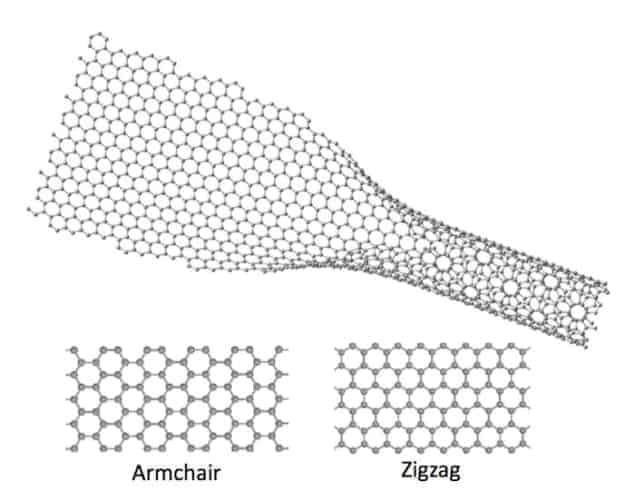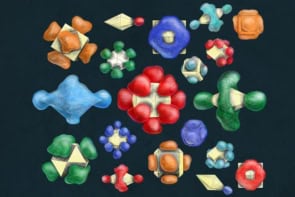
Researchers in the US have made the first precise measurements on the “edge states” of graphene nanoribbons. These states have been predicted to have extraordinary properties and the work could help build improved nanoscale devices in the future.
Graphene is a sheet of carbon just one atom thick and nanoribbons of this material are strips of graphene just nanometres across. Physicists believe that, depending on the angle at which they are cut, such ribbons should have a range of different – and technologically useful – electronic, magnetic and optical properties. These properties include band gaps, such as those found in semiconductors, that do not exist in larger sheets of graphene.
However, until now, scientists have been unable to test these predictions because they could not study the atomic-scale structure at the edges of cut nanoribbons – and therefore ensure their samples have the appropriate edges. This is because as-produced nanoribbons are typically disordered structures with only short stretches of straight edges.
Unzipping carbon
Michael Crommie’s team at the Lawrence Berkeley National Laboratory (LBNL) and the University of California, Berkeley (UCB) has overcome this problem by looking at specially made nanoribbons with smooth edges using a scanning tunnelling microscope (STM). These ribbons were obtained from Hongjie Dai’s group at Stanford University, where they were produced by chemically unzipping carbon nanotubes (rolled up sheets of graphene) – a technique that produces well-ordered, straight edges along the entire length of a nanoribbon.
The researchers discovered that these ribbons support 1D electronic edge states and that electrons in these states are confined to the nanoribbon edge and have an energy gap. “This kind of behaviour has been predicted for many years but never experimentally verified,” Crommie told physicsworld.com.
The LBNL–UCB team began by spin coating the nanoribbons onto clean gold crystals. Next, the scientists cooled the nanoribbon-decorated gold crystals down to 6 K and imaged them with an STM. “We were able to see the atomic-scale structure of the nanoribbons and use the STM to measure the local density of states of the edge states – that is, we measured ‘where’ the electrons are,” explains Crommie. “In other words, by measuring the current at the STM tip at different locations near the nanoribbon edge, we were able to determine the spatial distribution of electrons confined near the edge.”
“Nanoribbon edge states are real”
Research teams around the world have predicted that the novel electronic, optical and magnetic properties of such nanoribbons edges could be exploited, in principle, to make new types of devices – such as spin-valves, nanoribbon switches, detectors and photovoltaics from graphene. “Our new experimental results bolster the pursuit of these applications because we now know that the nanoribbon edge states are real,” says Crommie.
“The work could also help us better understand the basic physics of what happens at the edges of graphene samples”, he adds. Edges are as important and as useful as any other part of graphene, especially as the size of nanostructure-based devices is reduced to atomic length scales. “Understanding graphene edge behaviour, however, has lagged behind other graphene research because of the difficulties of preparing and probing smooth graphene edges,” says Crommie. “Our new results advance our ability to control and characterize graphene-edge nanostructures and so help to push the field forward and spur new ideas and applications.”
Xiaoting Jia of the Massachusetts Institute of Technology, who was not involved in the work, can see its merits. “This work is a big step towards understanding and controlling the unique electronic properties in graphene nanoribbon edges, and opens up many opportunities in the electronics, spintronics and optical applications of graphene nanoribbons,” he says.
Crommie’s team is now interested in modifying graphene edges in different ways – for example through electronic doping. “We want to explore nanoribbon edge behaviour under different conditions, both to test theories regarding behaviour in the materials and to perhaps discover new, unexpected phenomena,” reveals Crommie. “One of our goals is to fabricate nanoribbon devices that allow us to simultaneously probe atomic-scale nanoribbon structure and device performance, and to correlate these properties.”
The results were detailed in Nature Physics 10.1038/nphys1991.



